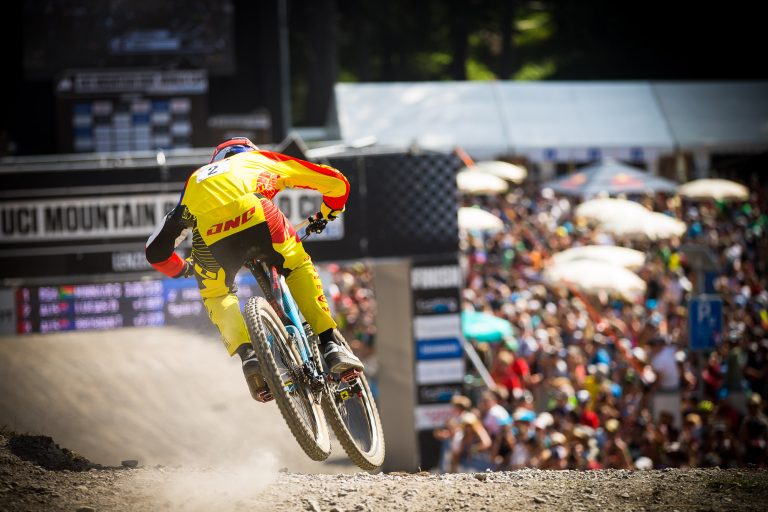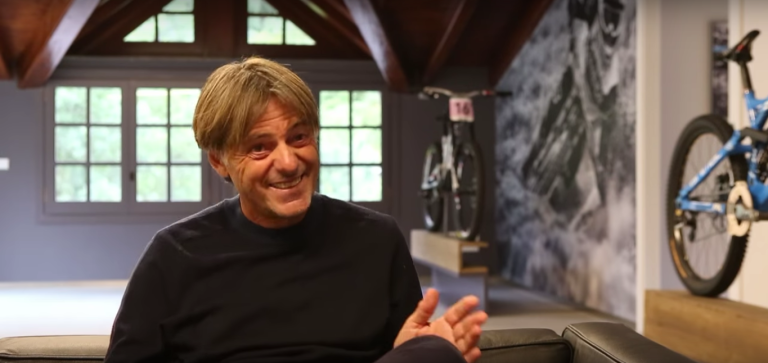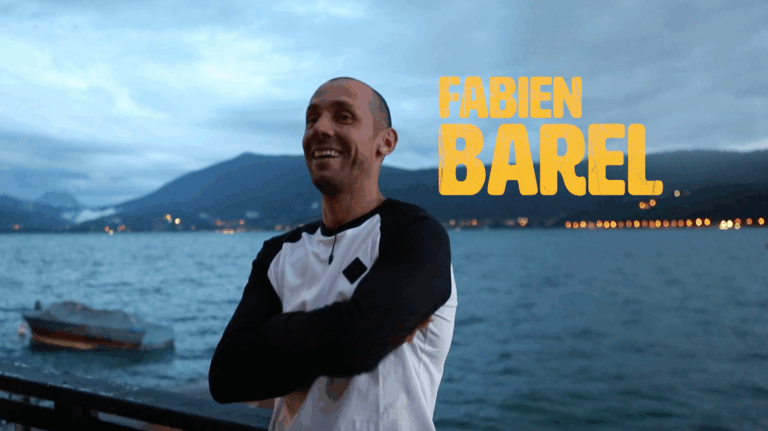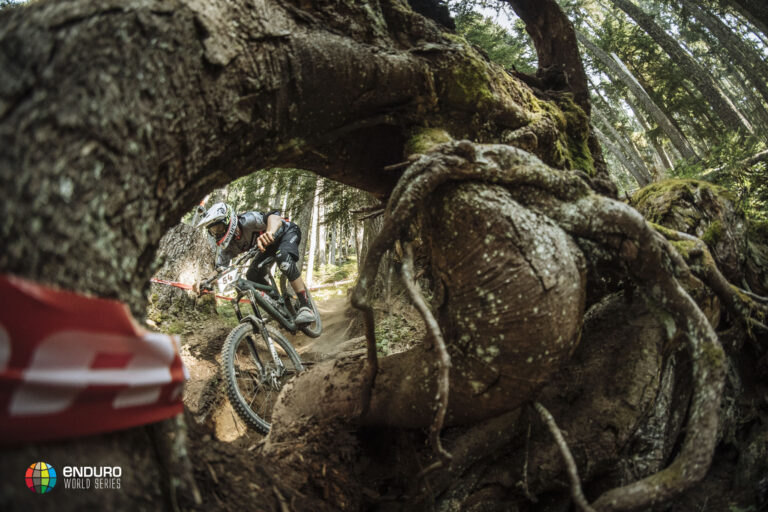 The need for adaptation doesn’t stop at the rules and evolution of enduro, it’s as if we’re seeing a new form of event management. In their nature rules seem to be very strict but the team are comfortable with it them not being quite so strict for enduro, something that Darren appears to be quite proud of, “You know the rulebook currently is pretty loose, which is a good thing right because it allows each event to have it’s own unique flavour and variety. I think there’s no question that over time that as the discipline evolves, people will start to adopt the same rules, we’re seeing a lot of that already. People taking the Enduro Mountain Bike Association rulebook and saying those are the rules we want to follow. People in Chile are calling us saying that. People in the UK, in Norway, New Zealand. They’re saying that enduro is the sport they want to do.”
The need for adaptation doesn’t stop at the rules and evolution of enduro, it’s as if we’re seeing a new form of event management. In their nature rules seem to be very strict but the team are comfortable with it them not being quite so strict for enduro, something that Darren appears to be quite proud of, “You know the rulebook currently is pretty loose, which is a good thing right because it allows each event to have it’s own unique flavour and variety. I think there’s no question that over time that as the discipline evolves, people will start to adopt the same rules, we’re seeing a lot of that already. People taking the Enduro Mountain Bike Association rulebook and saying those are the rules we want to follow. People in Chile are calling us saying that. People in the UK, in Norway, New Zealand. They’re saying that enduro is the sport they want to do.”
With Enduro taking place in so many varied locations, Chris is determined that, “the characteristics of the race should suit that of the environment you’re in. We are basically racing on the best trails in that area. If they’re flat and technical or if they’re steep and smooth, whatever it is. That’s trail riding in that area so the riders need to have everything in their tank to handle all those different factors.”
This liberal attitude obviously runs risks, Chris seems perfectly aware of that. At the first round there was some criticism for the courses being marked weeks in advance and riders having varied amounts of practice. “Because it’s been predominantly amateur racing before,” he explains, “amateurs who maybe couldn’t have taken the Saturday off work could have gone the weekend before or the weekend before that. It made perfect sense, but this year because there were so many guys there dedicated to it, it became a bit of a shit show all week and the week before. So we’ve started reducing the time between when the courses are released and the race itself. Depending on the loop, how big the race is, that’s been roughly one to two days training. Which means in most areas guys are getting one to three runs per course on average. And I think that’s working out pretty good. I think we have a good handle on it.”
Chris knows about dealing with this kind of feedback after being on the front line for comments, sometimes not so pleasant, at the downhill World Cups for years. Darren’s also very aware of it, “Our advisory board is made up of three athletes and three industry members and I think people just find that really refreshing, that they have a voice. At Crankworx we’ve always tried to include the athletes in the decisions we make, particularly with Slopestyle.”
 Something he also knows about particularly with Slopestyle has been how to make a spectacle of the sport. Enduro is a very different beast and Darren also knows that, “The key thing about enduro, and I know this is true of all four of us on the board, is that for us it is about everyone getting to participate. Whether you’re an amateur or you’re a pro. Yes we love the idea that there are now pro riders that have a discipline to ride in and there’s a World Championship of Enduro to chase, but it’s still very much about those amateurs that get to come out and be a part of the event. And that has also always been, for Crankworx, at the root of what we do. It’s one of the only events in the world where all the biggest stars from all the different disciplines are there and you ride in the chairlift with them, ride the trails with them and be in the same race with them. I think enduro brings that as well.” Although this isn’t going to stop them bringing some sparkle to proceedings when the EWS debuts in Whistler, with a live webcast of the final stage, “We aren’t going to cover the whole stage. Six to eight cameras will cover probably a good forty–five seconds to a minute of the run in. It’ll be pretty unique for Enduro because it’s extremely difficult to cover. You can build that story online during the day then people can tune in and see what’s happening.”
Something he also knows about particularly with Slopestyle has been how to make a spectacle of the sport. Enduro is a very different beast and Darren also knows that, “The key thing about enduro, and I know this is true of all four of us on the board, is that for us it is about everyone getting to participate. Whether you’re an amateur or you’re a pro. Yes we love the idea that there are now pro riders that have a discipline to ride in and there’s a World Championship of Enduro to chase, but it’s still very much about those amateurs that get to come out and be a part of the event. And that has also always been, for Crankworx, at the root of what we do. It’s one of the only events in the world where all the biggest stars from all the different disciplines are there and you ride in the chairlift with them, ride the trails with them and be in the same race with them. I think enduro brings that as well.” Although this isn’t going to stop them bringing some sparkle to proceedings when the EWS debuts in Whistler, with a live webcast of the final stage, “We aren’t going to cover the whole stage. Six to eight cameras will cover probably a good forty–five seconds to a minute of the run in. It’ll be pretty unique for Enduro because it’s extremely difficult to cover. You can build that story online during the day then people can tune in and see what’s happening.”
With all the talk of sympathy within the racing format to the environment it’s in, it comes as no surprise that the tracks we saw in Les Deux Alpes were varied and the format different to previous rounds. Some argued that the lift access to every stage, with very little riding required to link them, was not Enduro, but as Chris says, this is the kind of trail riding most of us would do if we came here just to ride. The tracks as a result did lean in the direction of a downhill race especially with the relatively short lengths, winning times of around four, six, eight and fourteen minutes on the four stages. If Enduro is about getting out and riding what is there, it seems this series is doing exactly that; some sections of this track harked back to the fireroad riding of Mammoth mountain, others blasted through the open alpine meadows. There were definitely some technical lines thrown in and a lot of it did feel representative of wholesome wooded trail riding, if maybe more like what would be in the eyes of an ex–downhiller. There was some questioning about the sparse course taping, again this is surely something where lessons will be learnt.
Rider enjoyment is paramount, the chance to experience the whole resort is unique, but it’s certainly not taking away from the battles at the sharp end. The new breed of specialist enduro racer is already reaching incredible heights. These riders are hitting the tracks they’ve barely ridden on bikes that are not going to give much leeway. It’s impressive stuff.
There’s a liveliness to the town that is reminiscent of the original festival in Whistler and shows that the transition to European shores is looking likely to be a success. After watching the Whip contest Darren acknowledges it’s not quite as big yet, “In Whistler there’s 1500 people standing on the side of a hill watching people turn their bike sideways, but there was a good crowd up there today. Halfway through it, all of a sudden you started hearing air horns, I was like, uh, this is like Whistler!”
The excitement levels may be morphing and as Chris concludes, both are bringing something to the party, “Enduro is not the visual spectacle that Slopestyle is, the experience of enduro is getting out and doing it yourself and being part of it and riding the trails. I think it really brings a good angle to it. It suddenly takes the focus of the Crankworx festival outside of the bottom of the bike park, it brings a very different crowd, a slightly more mature crowd to the whole thing. It’s quite a subtle sport.”
Subtle it may be, but it’s certainly making some waves at the moment. Not only through what the series and association is achieving but the way it is going about it. There’s a sense that it really is managing to walk the tough line of honestly representing the sport and riders whilst putting coherent events together. The joining of forces and meeting of minds is definitely making this sport multiply fast.







